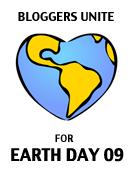“According to the World Health Organization (WHO), 1.1 billion people do not have access to safe drinking water. Unsafe water and inadequate sanitation kills nearly TWO MILLION people each year, mostly children under the age of five.”
One of my responses to the Changeblogger meme was to get more involved and educated around issues surrounding clean water and access to water. Here is one step towards that goal.
********
September 26, marks the 100th Year of Safe Water according to the American Chemistry Council, and we can help continue and supply safe drinking water to others.
[youtube=http://www.youtube.com/watch?v=aQcAOjFLGoE&hl=en&fs=1&rel=0]
Timeline
- 100 years ago, Jersey City became the first U.S. cities to routinely chlorinate municipal drinking water supplies. Over the next decade, more than a thousand U.S. cities adopted chlorination, helping to dramatically reduce infectious diseases.
About Chlorine
- Today, about 9/10 U.S. public water systems rely on chlorine in some form for safe drinking water.
- Chlorine can destroy disease-causing microorganisms.
- Chlorine removes many unpleasant tastes and odors, as well as certain metal contaminants like iron and manganese.
- Chlorine also providedes a residual level of disinfectant to keep water safe while in transport from the plant to a consumer’s water tap.
Quick Facts
- U.S. CDC calls drinking water chlorination “one of the most significant public health advances in US history.” In that same vein, in 1997, LIFE magazine hailed the filtration and chlorination of drinking water as “probably the most significant public health advancement of the millennium.”
- Drinking water chlorination has helped to virtually eliminate waterborne diseases such as cholera and typhoid fever, and played a major role in increasing Americans’ life expectancy from 47 years in 1900 to 78 years in 2006.
- Where piped water supplies are not available, simple techniques to disinfect and safely store water in individual households can dramatically reduce waterborne disease. A recent study by the WHO found that household-based chlorination is the most cost-effective way to reduce these waterborne illnesses.
Call to Action :: Disinfect 100 liters of Water with 1 Click
For starters, we can partake in ACC’s Clean Water Challenge Quiz. For every correct answer, the ACC with support from others, will donate $0.20 (up to a total of $200,000) to support household water chlorination programs in West Africa.
Your 1 Correct Answer + $0.20 = the cost of five chlorine tablets –> designed to disinfect 100 liters of water!
The Downside of Chlorine
- Some environmentalists urge that chlorine is a short-term solution arguing that cleaning up our rivers, lakes and streams is more sustaining
- Some health researchers argue that with all the benefits of adding chlorine (such as decreased Typhoid cases), there may be side effects of other increased health problems.
Alternatives
- Some say that Canada and Europe have switched from using chlorine to using ozone to ensure safe water. A handful of U.S. cities like Las Vegas practice this as well.
- Before using tap water, leave the water uncovered in the fridge for 24 hours for the chlorine to leave the water.
- Invest in a filtration system (which I have heard debates on this issue as well).
- Practice recycling and treat our water resources with care.
I would have to agree that I want us to find long-term, sustainable ways to have clean water and to increase water accessibility to others. I think as a base-line, we can all start by educating ourselves and learning more about where our water comes from and how we are impacted.
What’s your experience?
I admit I’m no expert, and invite the discussion here in the comments. If you have more ways to get involved in the accessibility to safe water issue, please post in the comments, as it’s an issue I’m increasingly educating myself on as well. Thank you!
Liked what you read? Feel free to share with others: 
